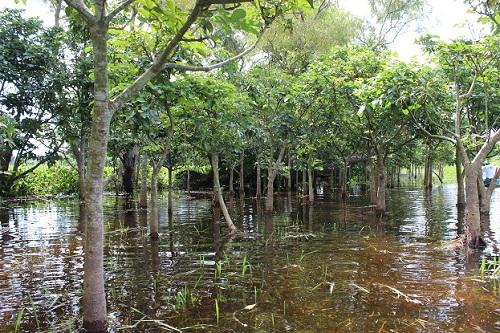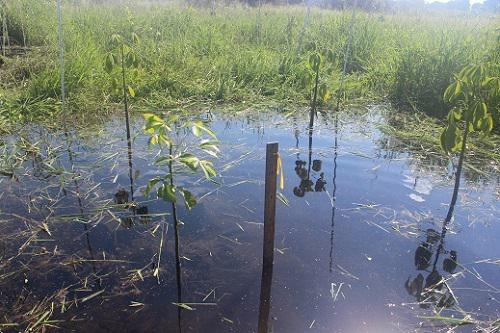Oscar Israel Sánchez Luna
The work site is part of a state reserve of wetlands, dominated by freshwater swamps. Land use, road construction, water flow modification and hurricanes, have reduced populations of native flora and fauna, especially the dominant tree Pachira aquatica. There is an ingoing restoration project in 50 ha, and a need to generating information on the environmental and successional state of the ecosystems recovered, and whether these activities will be able to recover the structure of the tree community, and whether the Modifications in the habitat allow the establishment of the fauna of the site.

Wetlands are very important ecosystems that host a large number of species, offering a number of benefits for ecosystem services; in particular, the tropical flood forests have the function of collecting and retaining water, helping to mitigate floods, contributing water to the water table and provide water to the flow in times of drought, provide a good number of timber and non-timber resources, transform, receive and store high amounts of carbon in the soil, which helps to reduce the concentrations of CO2 in the atmosphere and offer recreational opportunities for human populations.

The loss of tropical flood forests due to activities related to changes in land use also causes an alteration in hydrology, making them more prone to degradation due to extreme events such as storms and hurricanes, losing the benefits of environmental services they provide, so which is of great importance the actions of conservation and restoration, to recover said services.
In a tropical flood forest in the Gulf of Mexico called “Ciénega del Fuerte”, work has been carried out since 2010 on degraded areas, with different restoration actions, promoted by different governmental and academic institutions, but there have been no evaluations of the actions applied and determine if the health of the ecosystem is recovered.
This project focuses on making an assessment of the state in which the restored sites are located, evaluating various techniques to overcome the limiting conditions of the restoration and carrying out dissemination activities on the environmental benefits of floodplains for human communities near the site, as well as for occasional visitors.
When evaluating the different processes of restoration of a flood forest, the necessary information will be provided to determine what is the state of the restoration in its different phases and if the objectives of recovering its structure and function can be achieved with the actions that it has, and if it is necessary to propose new strategies and activities so that these objectives can be achieved, the participation of groups in ecotourism activities will be included in order to have an economic income to satisfy their basic needs and to feed the family and use the ecosystem sustainably, which may influence the protection and conservation of the ecosystem since they will be able to value this environment for the benefits obtained and keep them for their children.